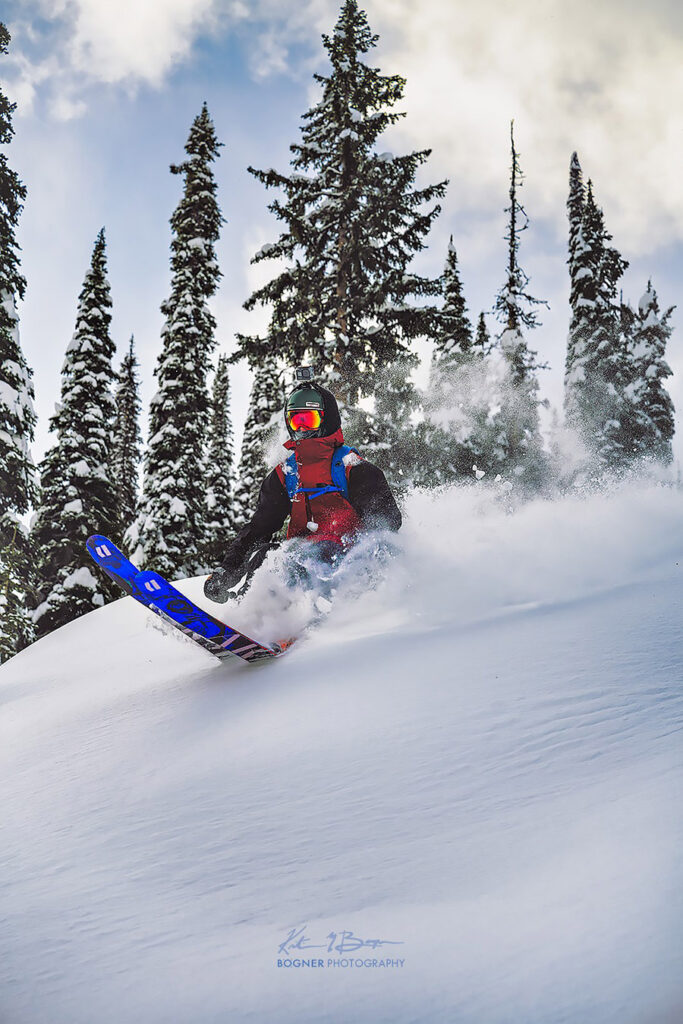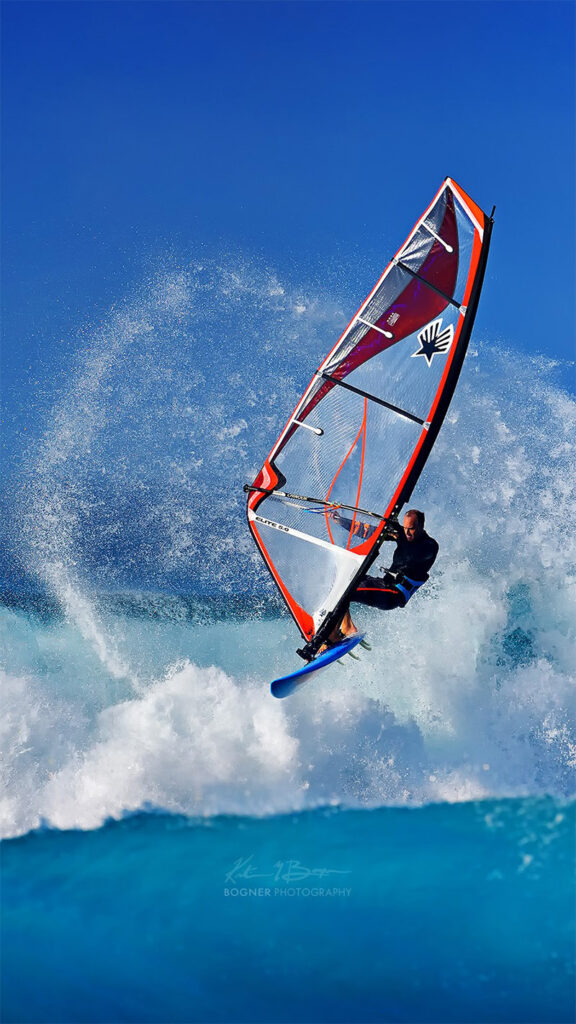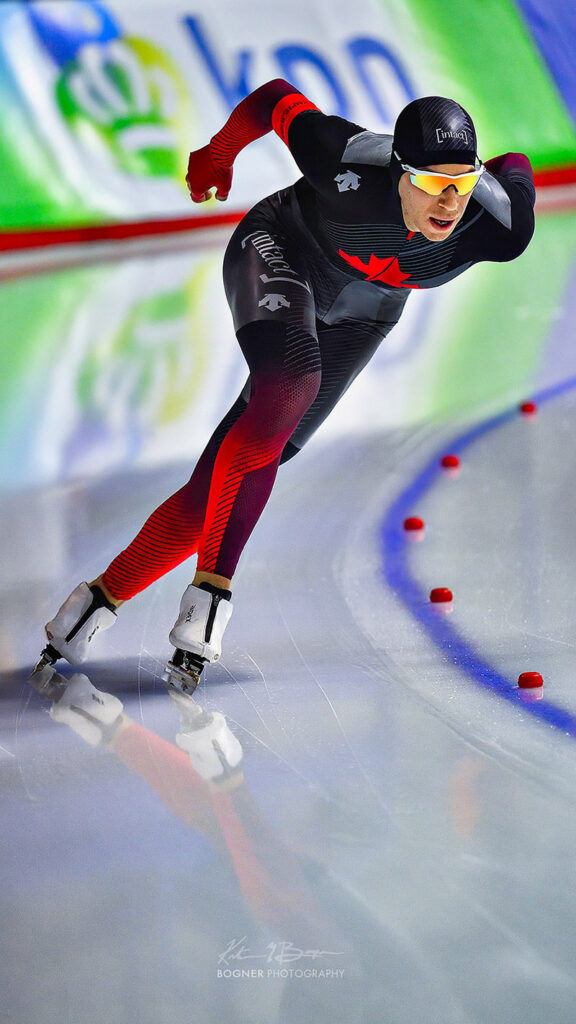Photographing a sport at the peak of the moment can be exhilarating, especially when you nail it, that’s just one of the many reasons its one of my favourite subjects to shoot. Here are a few tips to help you get better sports images, whether at the Olympics or photographing your kids at a local event.

Ski Shot – Nikon Z 7ii with Nikkor Z 24-70 F5 at 1/1600sec ISO 250
Focus and Composition
One of the keys is to a fantastic shot is to focus on the eyes of the athlete. There is so much emotion, intensity and concentration that can be told through the eyes. If I cannot see the eyes then I pick another key point on the athlete to focus on. I set my camera to AF-C (Auto-Focus Continuous Mode) so I don’t miss the shot if the camera isn’t sure if the subject is in focus or not. I then pre-determine what I want my composition to look like. Whether I want empty space to one side of the image to give the sense that the athlete is moving in that direction, or space below the athlete going off a jump to give the sense of height, I picture how I want the final image to look. I pick a focus point where I want the subject to be to match the composition, and then follow the athlete, holding the trigger down lightly to keep autofocusing or by pressing the AF-ON button and using back focus. When the subject is at his/her peak of action, I fire away and usually hold the button down for a few extra frames while following through smoothly to make sure I don’t get camera shake. I keep a good grip on my camera and lens, and use dynamic pressure by pulling slightly on my lens while pushing the butt of the camera with my other hand. I usually have VR (Vibration Reduction) on camera and/or lens turned on for sports images to minimize any potential camera vibrations and create the sharpest image possible. You can also use a tripod or monopod to help keep your camera steady.

Windsurf – Nikon D810 with 800mm F/8 at 1/5000sec ISO 800
Use a FAST Shutter Speed
When trying to freeze the action and create blur-free images with longer lenses, I try to shoot at a shutter speed of at least 1/500 second and optimally about 1/2000 of a second for most sports. Generally I recommend that photographers use manual metering (my preference) or shutter speed priority, where you set the ISO and the shutter speed and the camera adjusts the f-stop automatically. This is a quick and easy way to shoot sports and you can use your exposure compensation controls to adjust to the light conditions if necessary. This is especially helpful when shooting near white snow and ice which might throw off your meter as it tries to adjust between the bright background and darker subject. Turn image review on so that you can evaluate your images often, ensure that your whites aren’t blown out, and zoom in to make sure that your image is razor sharp.

Skating – Nikon D5 with 300mm F4 at 1/1000sec ISO 3200
Push the High ISO Capabilities of Your Camera to the Limit
Another cool option on many new cameras is Auto-ISO. This feature enables you to set your desired shutter speed and aperture and the camera will adjust the ISO or sensitivity of your sensor to get a correct exposure. Most of the newer cameras have phenomenal high ISO capabilities which make getting great sports images easier than ever, especially at indoor venues. Experiment with the ISO settings on your camera and evaluate your results. The higher the ISO the more noise or grain you will get, so use it, but use it mindfully. Get to know the limits of your gear and have fun experimenting in the process.
About the Author
Kristian Bogner is a 3rd generation master photographer, Nikon Ambassador and director. Sign up for a zoom mentoring session with Kristian Bogner or see more images, tips and Nikon Z series work along with shooting information on each photo at www.kristianbogner.com or Instagram: @kristianbogner








Kristian, the thing that caught my attention here is exactly that everything is “frozen.” The spray of snow and water in the snowboarding and windsurfing pics give some motion, and the lean of the skater does too. While I’m just an amateur/hobbyist, I’ve tried to capture motion too–though, the most recent sports action I have shot are cycling and motorsports (the latter without the benefit of being inside the fences). I like some of the motion work Darren Heath captures when he shoots F1–are you familiar with his work?